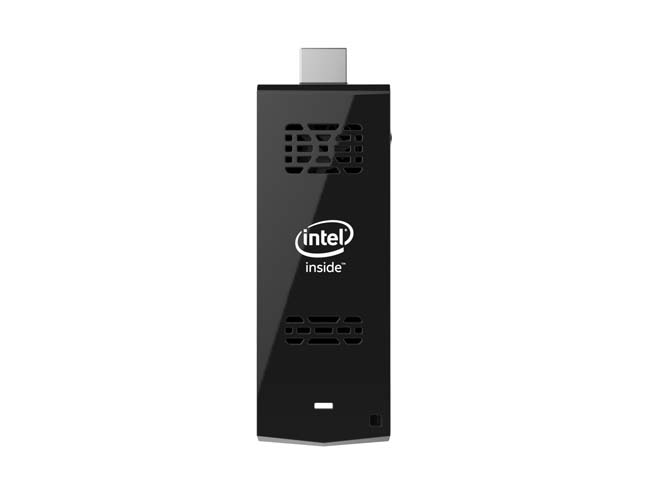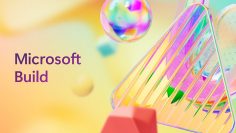
From punch card machines to compute sticks
By Indika De Zoysa
Would you believe it if I told you that the first use of the word ‘computer’ dates back to the 1600s? I kid you not. ‘The Young Man’s Gleanings’ by English author, Richard Braithwait,states, “I have read the truest computer of Times, and the best Arithmetician that ever breathed, and he reduceth thy days into a short number.”[i]
It referred to a person who carried out calculations, or computations, and the word continued with the same meaning until the middle of the 20th Century. It is fascinating to think that the word ‘computer’ has existed for centuries over the course of several generations. Even Mr. Braithwait did not imagine this word would embed itself so deeply into the fabric of our society to become one of the most famous words spoken globally. The computer; it truly is a fascinating word.
A hard-earned history
For a good thousand years back, our ancestors used many devices to ease their calculations. Some of these devices included: the abacus; the Antikythera mechanism from ancient Greece; astrolabe which helped astronomers to calculate movements of stars and planets; the slide rule and many more. These original devices paved the way for Charles Babbage, the father of computing, to invent the first mechanical computer in 1833.
Babbage’s legendary ‘Difference Engine’ became the perfect model for next-generation computer inventors to research more about general-purpose computers. It used punched cards to input data, had a memory and even a logic unit to control the flow of data.[2]
Babbage’s work was then carried out by a number of computer scientists. Analog computers appeared during the 1870s and died down during the 1950s due to the advent of digital electronic computers. The great Alan Turing’s work on the Universal Turing Machine inspired a German engineer named KonradZuse to develop the Z3, the world’s first working electromechanical programmable, fully automatic digital computer. Computers which had to re-wire in order to assist their fixed programmes were eliminated with the invention of stored programmes.
Early 1940s, the world saw the use of electronic elements and vacuum tubes inside computers. These vacuum tubes were later replaced by transistors and transistors’ fate was sealed by integrated circuits (ICs). Jack Kilby and Robert Noyce developed the first practical IC in 1950s but later, Noyce’s revolutionary use of silicon heralded the boom in the computer industry, which led the way to invent the microprocessor.
The arrival of the PC
While extensive developments in the computer industry continued, people were looking for a more personalized computer model. They wanted a computer, which could easily fit on to their desks because early minicomputers and workstations took up a lot of space. When IBM introduced the IBM PC (Personal Computer) in 1981, people thought that it came out of nowhere because the desktop’s journey was ruffled with false starts. The desktop PC revolution was a slow evolution at thattime. However, the arrival of the IBM PC was a turning point. Only one year earlier, most professional offices were using dedicated word processing machines, and most home documents were produced on electric typewriters. Within a few years, the desktop PC had all but replaced office word processors, and many making it into people’s homes.
As desktop computing rapidly grew increasingly complex through more sophisticated programs, operating systems, and networking, the cost of corporate computer system support grew exponentially, and the frustrations of end users followed. These issues, multiplied by thousands of users, have driven corporate IT leaders toward radically different solutions for the desktop computer to control costs, improve the quality of the computer experience for the end user, and increase efficiency in the workforce. Manufacturers transformed the early desktop case into a tower case, giving end-users more room expansion. PC games in the 1990s pushed users to frequently upgrade their CPUs, sound cards and graphic cards for better desktop performance.
From the desk to your lap
In the third quarter of 2008, notebook shipments surpassed desktop PC shipments for the first time with 38.6 million units versus 38.5 million units3. Battery-powered portable devices became more popular in households than desktop PCs and with the arrival of netbooks and high-performing Ultrabooks, desktop PC manufacturers started developing more diverse PC form factors, including touchscreen devices, voice control, All-in-One (AIO), pAIO (portable All-in-One) and mini PCs.
We even talk about a post-PC trend with smartphones and tabletsnow being used for computing activities as well as desktop PCs and laptops. This whole new trend is a driving force in the industry with the number of devices being shipped every year measuring in billions4.
Size won’t matter anymore
The reduction of the size of computers hastransformedthe entire computer industry. Smaller computing form factors have been gathering significant momentum and we will continue to see this momentum of smaller and more powerful computing form factors as the industry evolves.
The advancements in users’ requirements challenged traditional PC companies to push the boundaries in computer manufacturing. From electro-mechanical computers to programmable devices, which used vacuum tubes; third generation mainframes with ICs to personal and portable computers powered by a small silicon chips; computers have come a long way. Will this evolution stop at any point?
At the recently concluded CES 2015 (Consumer Electronic Show) in the United States, Intel proved that this journey would be an unstoppable one. The Intel® Compute Stick1was launched transforming any HDMI display into a fully functional computer, thanks to its quad coreIntel® Atom® processor. This new type of computing device is slightly larger than a USB pen drive but it includes 32GB of internal storage, built-in Bluetooth and Wi-Fi, and a Micro SD card expansion slot. The system performs just like other computers, but you can carry it in your luggage, anywhere you go. Basically, it’s a computer that fits in the palm of your hand.
The Intel® Compute Stick1has many practical applications, from small and medium sized business to schools or home entertainment. It’s ready to go out-of-the-box, and can plug into any HDMI monitor or TV, creating an instant computing experience.
The future promises many types of computers. As we speak, research is being conducted at labs to bring quantum computers, neural computers and DNA computers to life and embrace advanced technological fields, which would solve unsolved scientific mysteries. The question remains; will the evolution of computer stop at any point? We may never know.
[i] The definition for computer, Oxford English Dictionary (2 ed.). Oxford University Press.
[2]Halacy, Daniel Stephen (1970). Charles Babbage, Father of the Computer. Crowell-Collier Press
3 Source: iSuppli Market Research, December 2008
4 Source: IDC Worldwide Quarterly Mobile Phone Tracker, December 2014
Product and Performance Information
1This device has not been authorized as required by the rules of the Federal Communications Commission. This device is not, and may not be, offered for sale or lease, or sold or leased, until authorization is obtained.
Intel technologies’ features and benefits depend on system configuration and may require enabled hardware, software or service activation. Learn more at intel.com, or from the OEM or retailer.
© 2015 Intel Corporation
Intel, the Intel logo, {List of Intel trademarks} are trademarks of Intel Corporation in the U.S. and/or other countries.
*Other names and brands may be claimed as the property of others.




